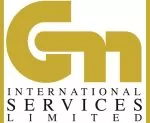According to the 25th GSCC statistical data provided by IHS Fairplay, Greek tonnage of ships over 1,000 GT continues to grow. Before comparing the year on year statistics, tribute must definitely be paid to all the Greek ship-owners that have contributed significantly over the last quarter of decade to making these statistics what they are today. By way of comparison, in March 1988 data showed that Greek investors controlled some 2,487 vessels amounting to 85,047,436 DWT or 47,268,018 GT. As of March 2012 Greek investors own 3,760 vessels totalling a staggering 264,054,167 DWT or 155,904,976 GT. That translates to an increase of over 550%. Between 1991 and 2001 Greek owned tonnage in GT more than doubled, breaking the 100,000,000 mark for the first time.
The measure by which a Flag State gauged its success, i.e., its world ranking, has traditionally been by its size, and rightly so. However, let's assume size does not matter. If we look past the DWT and GT data one will also note that the overall age of the Greek fleet has decreased consistently and considerably over the last 25 years. In fact the Greek shipping culture of the 21st Century is worlds apart from that of the 1980s. The current average age of the Greek controlled fleet is 10.5 years, that is to say, 2.3 years below the average age of the entire world fleet. At the beginning of the century the average age of Greek controlled vessels was reported to be 20.3 years. As a result of this ever decreasing average age, seven major IACS Classifications Societies are today responsible for more than 90% of this tonnage. Lloyd's Register tops the list with approximately 883 ships, followed by ABS with 694 vessels and Bureau Veritas in third place with 544 ships.
Throughout these last 25 years, Greek ship-owners and the Malta Flag Administration have worked hand in hand, striking up a relationship which thus far has withstood the test of time. Many factors can be attributed to the success of both. Initially it was probably down to the fact that mutual cooperation meant that both could grow into the powerhouses they are today. In time, one put pressure on the other to improve standards, procedures and operations with the results evident for all to see. Nonetheless, each has shown great respect towards the others and such a relationship should continue to be respected and nurtured. Greek ship-owners/managers who setup shop in the 1970s continue to collaborate with the Malta Flag and this in itself is testament to how far the two have come. Therefore, whilst it has been a case of out with the old and in with the new with respect to tonnage, this has not been the case with regard to Greek investors.
We are now also witnessing a shift in the business interests of Greek ship-owners. The Greeks are renowned for their considerable investment in the Tanker and Dry Bulk tonnage, the workhorses of the sea. They have made an art of these sectors and at times completely dictated the markets. Whilst they still remain very much the kingpins of these sectors, the figures show that there has been increased interest in the Container market and the more high tech market that is the Liquified Gas tanker market. The reasons for this shift (albeit slightly less with respect to the Liquified Gas tanker market) are numerous and each investor would undoubtedly have his own views. Gut feeling is one answer that the Greek investors can pull off as a legitimate response however a plausible theory is diversification of risk. These markets do lend themselves well to longer charter parties thereby offering some form of stability in an otherwise volatile industry. It will no doubt be interesting to see in what sectors the Greek owned tonnage will be distributed over the next years and if the Greek business model will continue to develop into one of diversification over specialisation.
The content of this article is intended to provide a general guide to the subject matter. Specialist advice should be sought about your specific circumstances.


